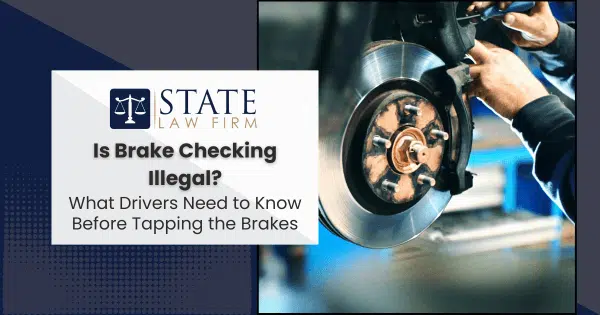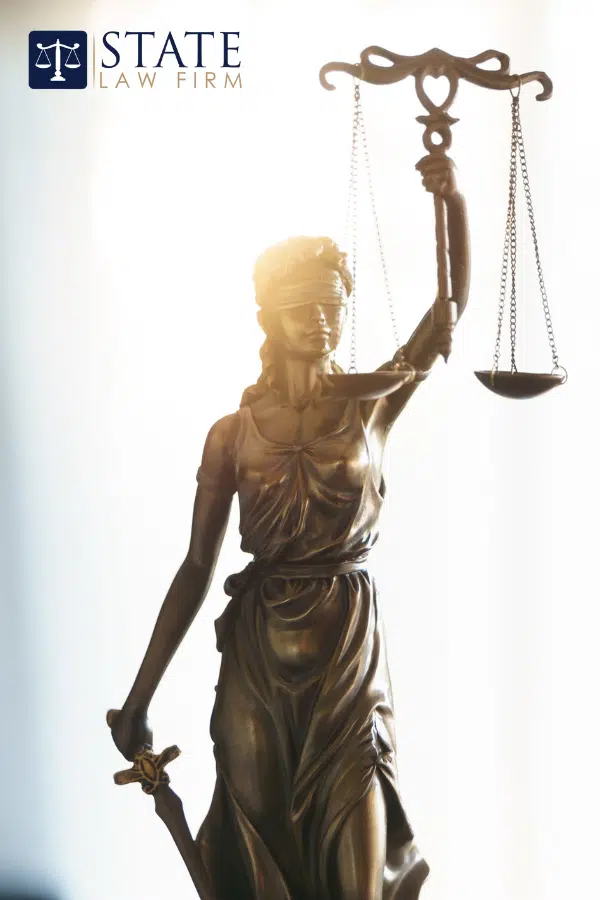Brake checking is the practice of slamming on your brakes to frighten or punish a tailgater. It might feel satisfying in the moment, but it creates a high risk of a rear-end collision and serious injuries.
Below is a clear, California-focused guide on what brake checking is, when it becomes illegal, who may be liable after a crash, and safer choices that protect you and your claim.
Understanding Brake Checking: What It Is and Why It Happens
Brake checking occurs when a driver intentionally and abruptly decelerates to send a message to the vehicle behind. Common triggers include tailgating, lane disputes, merging conflicts, and road rage. The problem is simple.
You reduce the time and distance behind you to nearly zero. That increases the odds of a crash, invites comparative-fault arguments, and can expose you to criminal charges if your braking shows willful disregard for safety.
Key risks to keep in mind:
- Rear-end collisions at highway speeds often cause whiplash, concussions, spinal injuries, and multi-car pileups.
- Insurers and opposing counsel will investigate whether your braking was sudden, unnecessary, or un signaled.
- Dashcams, vehicle data, and third-party witnesses frequently decide these cases, not the statements of the drivers alone.
The Law: When Brake Checking Crosses the Line
There is no statute that uses the words “brake check.” California law addresses the behavior through rules that prohibit reckless or unsafe driving and that require safe following distances and proper signaling.
Core legal rules that commonly apply:
- Reckless or aggressive driving. It is illegal to drive with willful or wanton disregard for the safety of people or property. Intentionally slamming the brakes to startle a tailgater can fit this standard, especially if it causes a crash or a near miss.
- Following too closely. The driver behind must not follow more closely than is reasonable and prudent given speed, traffic, and road conditions. Tailgating is unlawful and dangerous, and it is often a root cause of brake-check scenarios.
- Sudden stops without signaling. A driver must not stop or suddenly decrease speed without first giving an appropriate signal to the driver immediately behind when there is an opportunity to do so. This rule matters in brake-check cases because it focuses on abrupt, un-signaled deceleration.
What this means in practice:
- If you brake harshly to “teach a lesson,” you may face a citation for reckless driving.
- If the other driver was tailgating, they may face a citation for following too closely.
- If you decelerated suddenly without signaling when you had the chance, that conduct can count against you when fault is assigned.
Fault and Insurance: Rear-End Presumptions and Key Exceptions
In a typical rear-end collision, the trailing driver is often presumed negligent because drivers are expected to leave enough space to stop safely. That is not the end of the analysis. The presumption is rebuttable, and fault is decided on all the facts.
Important fault principles:
- Rear driver presumption. The law often starts with the inference that the rear driver was negligent for following too closely or failing to keep a proper lookout.
- Rebuttal evidence. The rear driver can rebut the presumption by proving the lead driver acted unreasonably. Examples include an abrupt stop with no hazard ahead, brake lights that did not work, or a last-second lane change directly in front of the trailing vehicle.
- Negligencia comparativa. California uses comparative fault. Liability can be shared. If both drivers acted unreasonably, each party’s recovery is reduced by their percentage of fault.
- Brake checking and liability. If evidence shows you braked suddenly to intimidate a tailgater, fault can shift toward you. If evidence shows the other driver was tailgating and had no safe buffer, fault can remain with them. Many outcomes split the difference based on speed, distance, signaling, traffic, and video.
How insurers evaluate these claims:
- Adjusters look for objective proof: dashcam video, surveillance, event data recorders, 911 call logs, witness statements, and physical damage patterns.
- They scrutinize impact location and severity, skid marks, airbag modules, and the timing of brake lights.
- They often request phone records if a distraction is alleged and examine whether either driver had a safe alternative, such as changing lanes or gradually reducing speed.
How to Respond to Tailgating Without Resorting to Brake Checking
Brake checking is dangerous, and it weakens future claims. Choose de-escalation and defensive driving instead.
Actionable steps you can take immediately:
- Create space. Maintain a steady speed and, if safe, change lanes to let the tailgater pass.
- Avoid acceleration games. Do not speed up and slow down to provoke a reaction. Keep a predictable pace.
- Signal early. If you need to slow or exit, signal well in advance so the driver behind has time to react.
- Do not engage. Avoid eye contact, gestures, or brake taps meant to send a message.
- Call for help if needed. If the behavior becomes threatening, call 911 when it is safe to do so. If the threat has passed but you want to report it, use the CHP non-emergency line. Provide the vehicle description, location, and direction of travel.
After a Crash: What to Do and What to Document
The minutes after a sudden-stop or brake-check crash are critical for safety and for your claim.
Your post-crash checklist:
- Get to safety and call 911. Report injuries and request police response.
- Intercambio de información. Gather driver and insurance details. Photograph driver’s license and proof of insurance if permitted.
- Documentar la escena. Take wide and close photos of vehicle positions, debris, skid marks, brake light condition, traffic signals, weather, and nearby cameras.
- Preserve video. Save dashcam footage. Mark the time of nearby businesses or transit cameras that might have captured the event.
- Collect independent witnesses. Neutral witnesses carry weight. Get full names, phone numbers, and short statements if they are willing.
- Seek medical care. Some injuries emerge hours or days later. Create a clear medical record by getting evaluated promptly and following treatment plans.
- Alert your insurer. Provide the basic facts without speculating on fault. Stick to what you saw and what your evidence shows.
- Consult legal counsel early. A strategic approach to evidence, experts, and statements can protect your rights. Not sure where to begin? This resource on Car accident lawyers walks you through eligibility, evidence, and recovery options.
Evidence That Helps Prove or Disprove Brake Checking
Objective proof often decides these cases. The more you can preserve, the better your position becomes.
High-value evidence to secure:
- Imágenes de la cámara del tablero from your vehicle or nearby drivers.
- Vehicle event data showing speed, throttle, and braking inputs in the seconds before impact.
- Brake light functionality. Photograph whether the bulbs or LEDs were working. Retain repair invoices and diagnostic scans if failure is alleged.
- Phone and telematics data indicating distraction or aggressive acceleration and braking.
- 911 audio and dispatch logs to establish timing, locations, and contemporaneous reports of aggressive driving.
- Roadway design and sight lines documented by photos and, in serious cases, accident reconstruction.
How this plays out:
- A tailgater may be primarily at fault if they had inadequate following distance and could not stop in time.
- A lead driver may share or bear fault if they braked hard with no hazard and did not signal when they had the opportunity.
- Mixed fault is common. Careful evidence work can move percentages significantly.
Insurance and Claim Strategy Tips
Brake-check cases involve credibility, physics, and policy language. Keep your process disciplined.
Practical guidance:
- No admitir la culpa at the scene or in recorded statements. Provide facts. Let the evidence and experts speak.
- Request the police report and correct factual errors quickly with documentation.
- Track symptoms and expenses in a simple log. Include mileage, co-pays, lost time at work, and limitations in daily life.
- Be cautious on social media. Posts can be misinterpreted and used against you.
- Consider legal representation if injuries are more than minor or liability is disputed. Attorneys can secure and analyze data, preserve video, and engage experts when needed.
Brake checking is unsafe and can be illegal when it shows disregard for safety or violates signaling rules. Tailgating is illegal as well and is a major crash factor. Choose de-escalation, preserve evidence, and get informed help early if a collision occurs. State Law Firm is here to evaluate your facts, protect your rights, and pursue the recovery you deserve.


